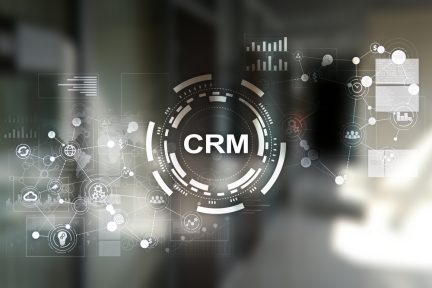THE MEANING AND GOALS OF CRM
CRM is the abbreviation of Customer Relationship Management. It is a software program designed for sales and marketing which allows you to organize information and streamline activities with current and potential customers; both online and offline.
But just calling it a “program” is an understatement, because it actually revolutionizes the very way of doing business. The introduction of a CRM in the company, in fact, allows the simplification of procedures, an increase in efficiency and the coordination of the work and activities of a team of people that share the same CRM. Especially when the company operates in multiple markets.
The CRM can also be connected to your management software for the exchange of personal and other data.
EXAMPLES OF WHAT CRM DOES
The connection of the CRM with the tools – especially digital – used by those who carry out commercial and marketing activities allows you to have the customer’s complete overview in a single framework. Here are some examples:
- Email: the connection with the mail program allows you to see all the emails sent and received for each customer.
- LinkedIn: interfacing the CRM with this social network allows you to add contact information on Linkedin with just a click: name, role in the company, etc.
- Newsletter: the integration between CRM and – for example – Mailchimp, allows you to import contacts and view the statistics of their reactions upon receiving the news that was sent.
- Agenda: synchronize the calendar – for example Google Calendar – with the CRM, in both directions.
- Offers: by saving the offers made for each customer in the CRM, I always have the full picture. And if I have the perseverance (or discipline) to note the outcome and why, I can periodically make statistics and thus understand our strengths and weaknesses.

In other words, it’s like having a dashboard for every single customer; in which you can take stock with a single click and thus decide on the next action.
It is clear that all of this makes more sense when the number of our customers – or potential customers – and markets is high. We cannot rely on memory or some note scribbled here and there.
Last but not least, CRM also serves to ensure that the wealth of knowledge of a salesperson becomes the company’s asset. And this is not a small aspect. Often when a salesperson goes they leave a void or, at most, there is a quick handover of duties with whoever takes over. With CRM, nothing is lost, because it contains all the sales activities that they carried out over the years.
CRM DOESN’T WORK WHEN
When not having understood its usefulness, it becomes “one more thing to do”. And this happens when – like many digital tools starting with the smartphone – we do not invest time in the initial phase to deepen our knowledge of all the features that will make it easier for us to carry out our business and save precious time.
In addition, of course, to the willingness to review the way we work and our habits. And this is more difficult when there are senior export managers who are unwilling to change.
WHICH CRM TO CHOOSE
There are many of them and I will not dwell on the selection criteria now; the number of websites that cover this is abundant. It is important to both invest time to investigate them as well as asking the opinion of companies that already use them.
I’ve tried a couple and currently use – and recommend – Teamleader; also thanks to the quality-price ratio (which is no small detail for a small or medium-sized company). If you’d like a two week free trial, log in here: Try Teamleader
CONCLUSIONS
This is the sixth article on the topic of Exporting with Digital Tools, aimed at small and medium-sized businesses.
Switching from customer management based on a calendar or, at most, with a shared file to a CRM is also a way to improve your exports with digital tools.
Pier Paolo Galbusera
